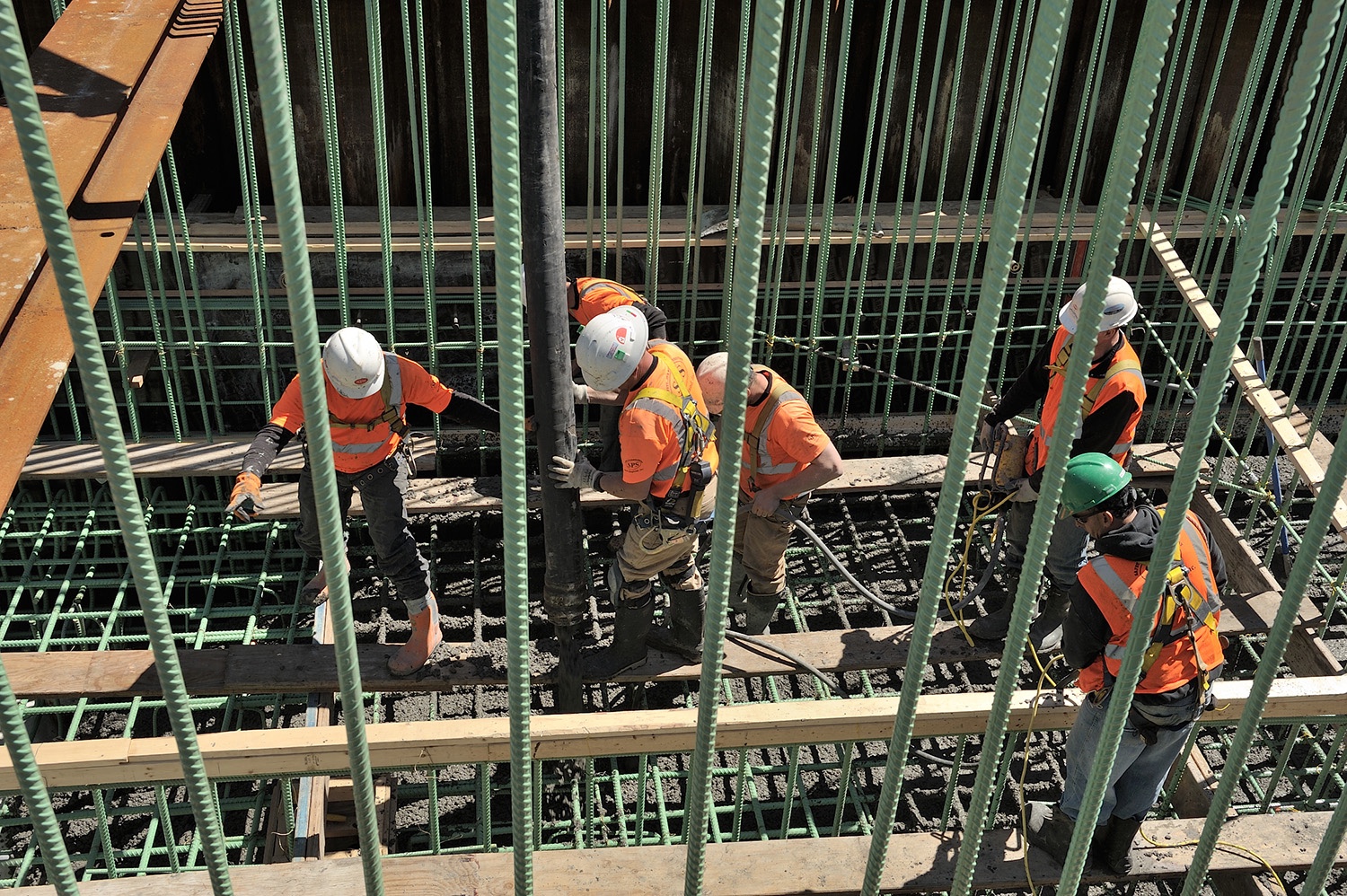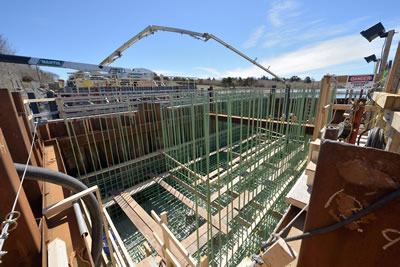When placing in cold weather, extra precautions must be taken to ensure concrete sets properly and gains adequate strength. The Transtec Group, Texas-based concrete pavement practitioner, notes how the first few days after placement are the most important because that is when cement hydration reaction proceeds the fastest and concrete gains most of its compressive strength. However, cold conditions slow the hydration process, meaning that concrete placed in low temperatures gains less strength than the same mix in warmer temperatures during the same length of time. If the water in the concrete mix freezes, the hydration process stops completely. Even if it thaws, strength gain may not recover.
Read MoreTag: Command Center Concrete
Mass concrete specification success hinges on temperature monitoring
by Sabrina Garber
Appropriate temperatures and temperature ranges are key to maintaining mass concrete durability and longevity. The risk of temperature-related damage increases if the temperature of concrete gets too high or the temperature differential between the hottest interior point and the surface and/or edge gets too large. Therefore, many agencies include specifications that require early-age concrete temperature not exceed some maximum internal temperature limit and that temperature differentials in early-age concrete stay below some maximum limit.
Read More
